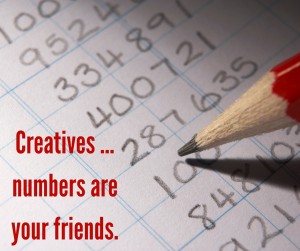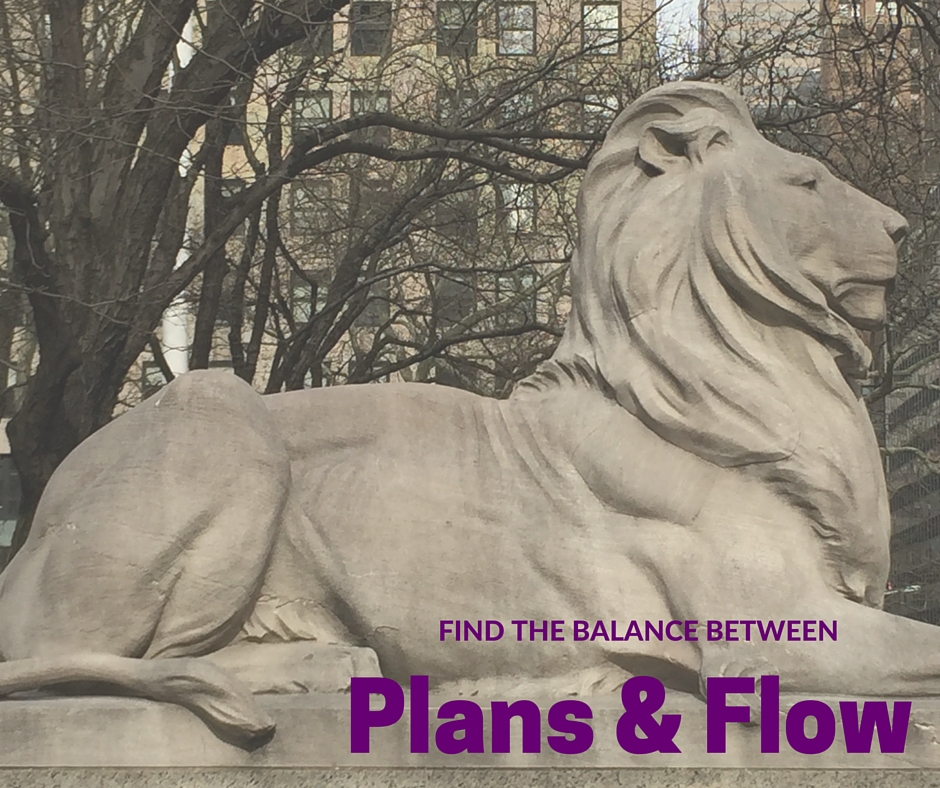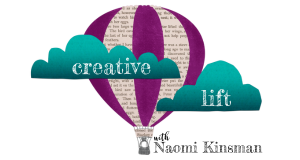by Naomi | Nov 28, 2016 | Creative Life

Creativity often shows up at the intersection of various thoughts. Here are three to ponder … what do they spark for you?
“The more you leave out, the more you highlight what you leave in.”
― Henry Green
“In each of us lie good and bad, light and dark, art and pain, choice and regret, cruelty and sacrifice. We’re each of us our own chiaroscuro, our own bit of illusion fighting to emerge into something solid, something real. We’ve got to forgive ourselves that. I must remember to forgive myself. Because there is a lot of grey to work with. No one can live in the light all the time.”
― Libba Bray
“Your hand opens and closes, opens and closes. If it were always a fist or always stretched open, you would be paralysed. Your deepest presence is in every small contracting and expanding, the two as beautifully balanced and coordinated as birds’ wings.”
― Jalaluddin Rumi, The Essential Rumi

by Naomi | Apr 6, 2016 | Creative Life
When we don’t leave room in our plans, we squash the possibility of surprise. What’s worse, we often don’t realize we’re limiting ourselves.
Picture two actors onstage, beginning an improvised scene.
Actor One: (pointing frantically) Oh no, look, it’s a Tyrannosaurus Rex.
Actor Two: (leaning forward) And look, he’s nodding at us. I think he’s trying to tell us something.
Actor One: He’s running straight toward us! Run!
Actor Two: (running along behind Actor One, looking over her shoulder) I wonder if we should try to talk to him?
Actor One: He’s a monster. AGGGGH! Run!
Actor Two can’t salvage the scene, and ends up running offstage with Actor One. The scene is over.
In improv, we call this scenario “saying no.”
Actor One began the scene planning for a T-Rex to chase her offstage. No matter what her scene partner said, Actor One insisted the scene go as she planned. She said no to all the options and possible surprises Actor Two introduced.
Why might this happen?
Actor One might be feeling nervous. The audience is watching, and the silence is lengthening. So, she blurts out the first thing that comes to mind. There’s a T-Rex! Good! Drama. Danger. The silence is broken. But Actor Two, relieved of the burden of introducing the first idea, sees the dead-end problem in the scene. Two actors shrieking and running away isn’t really a scene. So, Actor Two introduces the possibility that this T-Rex isn’t like other dinosaurs. If Actor One allows this new idea to develop, something interesting might happen. Neither actor is responsible entirely for the success of the scene. Both actors are likely to be surprised. When actors are bold enough to say yes to the unknown, interesting things can happen.
Often, we say no in our real lives, too.
- We have a firm agenda for a meeting or class and refuse to be sidetracked, even when interesting opportunities for learning or exploration arise.
- We mentally script a conversation or confrontation and don’t leave room to listen and respond in real time.
- We schedule our days to their very edges and don’t leave room for serendipitous detours.
Unfortunately, the solution isn’t as easy as throwing plans out the window. Classes, confrontations, and even day-to-day schedules suffer if we don’t prepare at all. Maybe here, we can learn a thing or two from improvisational actors.
- First, improv actors know that improvisation is a skill to be practiced and refined. It’s not a “who cares, I don’t need a script” attitude. Rather, improv actors shift their focus from practicing for ONE predictable scenario into practicing for a MULTITUDE of scenarios. They practice listening, saying yes, and adding ideas to move the game forward.
- Second, improv actors know that every scene is an experiment. Some will work better than others, and some will completely fail. They accept the failures as part of the learning process.
- Third, improv actors build possibilities in the spaces between people, rather than limiting the options to their own experience, ideas and skill set. They aren’t afraid to collaborate and to allow others to help.
Recently, I’ve been challenged to take steps forward into new territory–artistically, professionally, and personally. What’s fascinating is how pertinent my improv training continues to be, no matter how far the challenge is from an actual stage. It turns out that improvisation can be a training ground for real life. As in on-stage improv, when you approach life’s situations with an open-for-surprise attitude, delightful things can happen.
I wonder: In what life situation might you practice the art of improvisation? I hope you try it, and if you do, share your story on Instagram or Twitter and tag me. I’d love to hear how the experiment goes for you.
by Naomi | Mar 7, 2016 | Creative Life
 I’ve never been much of a numbers girl. When someone asks what nine times twelve is, I’m reminded of those pages filled with multiplication problems and the clock tick, tick, ticking away. Even now, the memory makes my heart take flying leaps against my rib-cage.
I’ve never been much of a numbers girl. When someone asks what nine times twelve is, I’m reminded of those pages filled with multiplication problems and the clock tick, tick, ticking away. Even now, the memory makes my heart take flying leaps against my rib-cage.
Because of my number dread, I don’t capture data in numbers very often. For the most part, I rely on intuition and my memory.
The thing is, memory can be tricky. Stories can be revised. Intuition, while wise, can also be skewed. What I’ve learned recently is that whether you’re a numbers person or not, numbers are invaluable when it comes to creative problem-solving. It turns out, numbers are our friends.
Yep, you read that right. Numbers are our friends.
As a creative person, I constantly have new ideas sprouting up here and there and everywhere. I’m easily tricked into thinking that I can add “just one more thing” to my already full day. Were I to look at the numbers, I’d see that a day has 24 hours. Some of those hours are required for sleeping, eating, exercising, laughing … There’s a finite number of “just one more things” that a day can hold. The number 24 provides a distinct, specific problem to solve. How will I spend my 24 hours today?
Improvisational actors know that in order to create a great scene, a set of givens is required. The givens lead to interesting questions, and interesting questions lead to unexpected solutions. If the scene must include an elephant, an umbrella and a pickle, the actors can then work on how to make those things happen. The how is what makes the scene hilariously clever.
When you ask yourself, “How might I … ” along with a specific problem to solve, you’re likely to come up with a list that includes a few unusual and delightful solutions. But when you ask yourself, “What should I do about … ” and ponder a vague problem you’re facing, you’ll probably feel frustrated, blocked and stumped.
Let’s try it ourselves:
Q: How much time is there in your week?
A: This one is the same for all of us … 168 hours.
Q: What are your firm commitments and how many hours do they take on average?
A: This one is variable, but includes sleep, exercise, meals, family, and other non-negotiables.
Q: How much time is left over?
A: Time – Firm Commitments = Left Over Time
Q: How might you creatively utilize your left over time?
Let your mind roam here. You’ve done the hard math part, and now you can use your creative gifts. Explore the preposterous, turn the problem on its head, transform the boundaries into opportunities. See what you can come up with. Here’s the excellent news. This strategy goes far beyond offering solutions for your current time crunch. Now, you have a roadmap for tackling all those pesky life questions which have been bugging you.
The process goes like this:
- Gather the numbers and specific givens.
- Allow the numbers to shape a clear understanding of the problem.
- Use that understanding to shape a “How might I … ” question.
- Tap into your creativity to brainstorm a list of possible answers …
- And THEN listen to your intuition to choose which solution to try first.
Give your solution some time to kick in, and then check your results against the numbers. Now, you have a process that allows you to experiment and refine rather than inventing the wheel over and over, having no idea whether you’re making progress at all.
Now, here’s the thing. If you’re anything like me, gathering the numbers will be a little bit painful. Your creativity will lurch and struggle against the hard, firm lines of reality. And yet, that lurching and struggling is actually energy building, energy that will throw itself eagerly into problem solving as soon as you set it free. I promise that the pain is worth the results.
Will you try it for yourself? I hope you do. And when you do, let me know how it goes. Post in the comments below, or share your story with me on Facebook or on Twitter. I can’t wait to hear about your successes!
—
Psst… Do you know about Naomi’s Tinder Box: a weekly collection of curated resources, inspiration and encouragement? Keep your creative spark ablaze … sign up for exclusive access here.
by Naomi | Feb 22, 2016 | Tools & Apps
Naomi’s Playlist is an eclectic collection of tools that help me approach my work as play. My hope is that they’ll do the same for you!

NOTE: This post is part one of a now-and-again collection of Playlist posts focused on various Evernote strategies. Evernote is one of those powerful tools that can solve a multitude of challenges, so it’s useful to drill down and focus on individual strategies one at a time.
Object: Taming the information tsunami
What Didn’t Work: Drowning in potentially useful information, having non-actionable emails fill my inbox, coming across free reports and blog posts I wanted to review “someday,” and feeling constantly further behind.
My Aha! Moment: I’ve certainly heard that one should deal with each email only once. Also, I’m aware that I shouldn’t let every potentially helpful piece of information interrupt my train of thought. The trouble is, I also know that when I want ideas for conferences to attend, or fun activities for the weekend, or resources to help me more effectively use Twitter, I appreciate the kick-start that a collection of resources can give me.
But, just letting the information pile up wasn’t helping me. Not only were the piles overwhelming my inbox and desk, when I wanted information, there wasn’t any simple way to access it. The result? I’d start my research by “trying to remember” that one helpful tool I saw once.
Yep. Not very effective, and totally slow going.
I was already using Evernote, but the steps required to save something to Evernote kept me from using the tool. I had to decide which notebook to use, which tags to use, and most of the time, I ended up with messy files anyway. I needed a split second way to put items effectively into Evernote. That’s when I found Michael Hyatt’s post on Evernote. (Warning: if you’re trying to onboard Evernote in small steps, his post may be a bit overwhelming).
Here’s what’s most pertinent to our current discussion. Rather than using lots of different notebooks among which you must constantly choose, Michael suggested using two. What you need is an “Inbox” and a “Cabinet.” Evernote defines these buckets as “notebooks,” but I find it more helpful to think of them as a physical inbox and a physical filing cabinet.
When I made this change, Evernote became simple for me. My inbox was my standard notebook, where all incoming notes collected. Then, in slow moments, I’d fly through the entire list, tagging and sending the notes into the cabinet.
Now, there’s more to how I use Evernote, and how I make tagging easy, but for now, let’s focus on this immediate strategy that’s sure to give you immediate relief.
How I Play:
- I have my gathering tools set up to send items to my inbox. The main gathering tools are likely your web-clipper, your scanner and scanning software, and any email helper app that you use.
- When I determine that an item (webpage, blog post, email, etc) is information that I may someday want, I send it to my inbox.
- In those moments when I’m in between meetings or in need of some mindless work, I tag and re-file my notes into my cabinet.
Player’s Notes:
- I don’t worry about notes piling up. The great thing about Evernote is that when you search, it goes through the text of every note. Even if your note isn’t perfectly filed, it will likely come up when you search. And tagging and filing 100 notes doesn’t take too long if the task has your full attention for a few minutes.
- Most Evernote gathering tools allow you to set a reminder date. If the note is timely and you want to be reminded on a certain date, set a reminder as you send it to your inbox.
- When you want to share a subset of notes with a team-member or a group, you WILL need a separate notebook to share with them. Try not to get hung up on the rule of only having two notebooks. While having only one inbox and one cabinet is ideal, reality will probably force you to maintain a couple extras. Especially in those cases, the inbox is a fantastic capturing tool so you can then re-route as needed.
Take it to the Next Level:
- If you have time, and you know your tags well enough, you can always tag a note and send it directly to your cabinet. Most tools allow that, too. The beauty of the inbox is that it’s there for you if you need it and can always be bypassed if you don’t.
—
Psst… Do you know about Naomi’s Tinder Box: a weekly collection of curated resources, inspiration and encouragement? Keep your creative spark ablaze … sign up for exclusive access here.
by Naomi | Feb 17, 2016 | Creative Life
 I’ve been flying through life at break-neck pace, and that’s how I ended up in New York with hardly an inkling of a plan. I knew I needed to be in town by Thursday mid-day for a meeting, and that the conference spanned the weekend. Other than that, I’d hardly consulted the schedule. I figured I’d find nooks and crannies in my schedule to explore New York, particularly since my husband was joining me for the weekend.
I’ve been flying through life at break-neck pace, and that’s how I ended up in New York with hardly an inkling of a plan. I knew I needed to be in town by Thursday mid-day for a meeting, and that the conference spanned the weekend. Other than that, I’d hardly consulted the schedule. I figured I’d find nooks and crannies in my schedule to explore New York, particularly since my husband was joining me for the weekend.
So, I flew in late Wednesday night and woke up Thursday morning with an empty slate. What to do?
My first thought was: I wish I’d made a plan. But my second thought was filled with curiosity: I wonder what’s around the corner from this hotel?
And the adventure began.
It turns out that around every corner in New York, surprises wait. Cathedrals, libraries, museums, unusual shops, coffee bars, restaurants, artists, musicians, a kaleidoscope of people–each a walking story in and of themselves. As I stepped onto the sidewalk in New York, I was swept into the bustling, vibrant flow.

If I’d had a plan, I’d have been frustrated. I can picture myself, head down against that cold New York wind, struggling toward my destination, missing all the surprises along the way. But without a plan, I could soak it all in, see what I didn’t know to look for, discover the richness that isn’t in the tour books.

I wonder how often my plans keep me from being in the flow?
Flow is quite different than drift. It’s true that without a plan, we have the potential to drift through life and find ourselves where we never would have chosen to be. But flow is a shortcut. Consider a character in a book who sets out to achieve a goal. By the end of the book, she nearly always finds that what she really needs is something deeper, more meaningful, than the goal she originally set. The plans she sets launch her into motion, but soon, the plan tends to get in the way. Why? Because she’s so focused on her idea of how things ought to go, she doesn’t allow margin for surprise. She doesn’t allow herself to be swept into the bigger story of what’s happening all around her. She’s struggling against the flow.

So how do we strike a balance between plans and flow?
- Start by not being afraid to set a goal. Take into account what’s true in your life, and using those givens, set a goal that points you in a specific direction.
- Head out boldly. Let your goal inform the questions that you ask and the experiences you seek out.
- Listen closely. Pay attention. Allow yourself to follow your curiosity. I wonder what’s inside that cathedral? Go ahead, wander a bit. Your goal will still be there waiting for you, but maybe you’ll see it in richer color through the stained glass windows.
- Look for secret passages and hidden doorways. Drift happens when we lose our way by following every distraction. Flow is being caught in an ever-increasing current and heading deeper in. Why did I set this goal? What’s underneath? What’s urging me onward?
- Keep in mind that “plan” is a noun and “flow” is a verb. When you’re in flow, there’s no destination. No one can stay in flow indefinitely. You’ll find beauty and joy along the way, and have a grand, meaningful adventure. And every now and again, you’ll get tangled in the weeds. When that happens, it’s time, again, to go back to the beginning and set a new plan.

Where are you right now? In a planning phase? Drifting? Flowing? Do you have particular questions you ask yourself that help you find flow? If so, I’d be so grateful if you’d share them. Share below, or feel free to connect with me on Twitter (@naomikinsman) or Facebook.
Here’s to you and your grand adventure!
—
Psst… Do you know about Naomi’s Writerly Play Kit: a weekly collection of curated resources, inspiration and encouragement? Keep your creative spark ablaze … sign up for exclusive access here.



 I’ve never been much of a numbers girl. When someone asks what nine times twelve is, I’m reminded of those pages filled with multiplication problems and the clock tick, tick, ticking away. Even now, the memory makes my heart take flying leaps against my rib-cage.
I’ve never been much of a numbers girl. When someone asks what nine times twelve is, I’m reminded of those pages filled with multiplication problems and the clock tick, tick, ticking away. Even now, the memory makes my heart take flying leaps against my rib-cage. 
 I’ve been flying through life at break-neck pace, and that’s how I ended up in New York with hardly an inkling of a plan. I knew I needed to be in town by Thursday mid-day for a meeting, and that the conference spanned the weekend. Other than that, I’d hardly consulted the schedule. I figured I’d find nooks and crannies in my schedule to explore New York, particularly since my husband was joining me for the weekend.
I’ve been flying through life at break-neck pace, and that’s how I ended up in New York with hardly an inkling of a plan. I knew I needed to be in town by Thursday mid-day for a meeting, and that the conference spanned the weekend. Other than that, I’d hardly consulted the schedule. I figured I’d find nooks and crannies in my schedule to explore New York, particularly since my husband was joining me for the weekend. 


